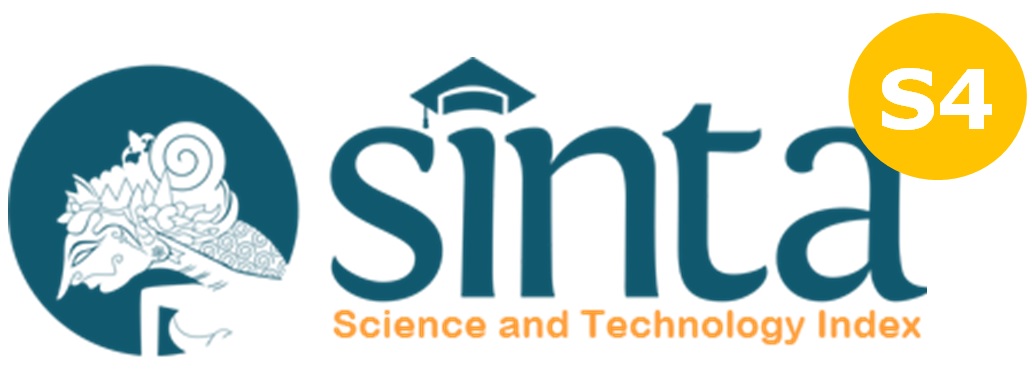Model Optimasi untuk Menentukan Tingkat Produksi Produk Multi Item Berkatagori Cepat Rusak
DOI:
https://doi.org/10.23969/infomatek.v26i1.13659Keywords:
biaya, optimal, kadaluarsa, kekurangan, kelebihanAbstract
Tulisan ini berisi mengenai model optimasi untuk menentukan tingkat produksi optimum bagi produk-produk berumur pendek atau produk katagori cepat rusak (perishable products). Pada tahun 2020 penulis telah mengembangkan model optimasi untuk menentukan tingkat produksi optimum untuk produk tunggal (single item) bagi produk katagori umur pendek atau cepat rusak (perishable products). Dalam tulisan ini penulis mengembangkan model tersebut untuk produk ganda atau multi produk (multi item). Variable biaya yang dipertimbangkan dalam model ini sama dengan model single item yaitu diantaranya, biaya produksi, biaya set-up, biaya penyimpanan dan biaya kadaluarsa (expired cost). Model yang dikembangkan berangkat dari system produksi yang menganut system produksi batch (batch production system). Pada model multi item ini semua produk menggunakan fasilitas yang sama sehingga kegiatan produksi untuk tiap item dilakukan secara bergantian dengan mengikuti ukuran batch tertentu. Model optimasi yang dikembangkan adalah untuk menentukan ukuran batch setiap item dalam tiap putaran produksi sehingga dapat meminimasi biaya total, meminimasi kelangkaan serta mengurangi penumpukan yang berakibat terhadap terjadinya kadaluarsa. Konstrain yang dipertimbangkan adalah kapasitas, demand, dan life time (umur produk). Validasi model dilakukan secara matematis dan empiris. Secara matematis dilakukan dengan menggunakan konsep turunan, sedangkan empiris menggunakan contoh kasus ril di lapangan.Penulis berharap model ini akan memberikan manfaat praktis bagi para praktisi maupun bagi kalangan akademisi khususnya mahasiswa.
Downloads
References
Acevedo-Ojeda, A., & Chen, M. (2020). Multi-level lot-sizing with raw-material perishability, deterioration, and batch ordering: an application of production planning in advanced composite manufacturing. Computers & Industrial Engineering, 145, 106484.
Amorim, P., Belo-Filho, M. A. F., Toledo, F. D., Almeder, C., & Almada-Lobo, B. (2013). Lot sizing versus batching in the production and distribution planning of perishable goods. International Journal of Production Economics, 146(1), 208-218.
Arifin D, Charisma C, (2018). Material Procurement Model Considering Life Time and Minimum Order Quantity, Proceedings of International Conference on Industrial Engineering and Operation Management (IEOM),Bandung-Indonesia.
Arifin D, Yusuf E, & Charisma C. (2019). Fixed Order Quantity Model for Multi Item Single Supplier Considering Life Time and Minimum Order Quantity, Journal of Physics: Conference Series, Volume1, 179.
Arifin, D., Muttaqien, Z. & Yusriski, R. (2020). Determining Production Quantity Models for Short-Age (Perishable) Products, Food Science Technology 8(2): 23-27.
Benjamin, B. (2004). Logistics Engineering and Management, sixth edition, Prentice-Hall.
Broekmeulen, R. (2009). A heuristic to manage perishable inventory with batch ordering, positive lead-times, and time-varying demand. Computers & Operations Research, 36(11), 3013-3018.
Castellano, D., Gallo, M., Grassi, A. & Santillo, L.C. (2019). Batching decisions in multi-item production systems with learning effect. Computers & Industrial Engineering, 131: 578-591.
Charnprasitphon, A. (2007). Modeling and analysis of the batch production scheduling problem for perishable products with setup times, 68(05).
Chen, J., Dong, M., & Xu, L. (2018). A perishable product shipment consolidation model considering freshness-keeping effort. Transportation Research Part E: Logistics and Transportation Review, 115, 56-86.
Chen, Z. (2018). Optimization of production inventory with pricing and promotion effort for a single-vendor multi-buyer system of perishable products. International Journal of Production Economics, 203, 333-349.
Chiu, Y.P., Chang, H.H., Chiu, T. & Chiu, S.W. (2021). A multi-item batch fabrication problem featuring delayed product differentiation, outsourcing, and quality assurance. International Journal of Industrial Engineering Computations. 12(1): 63-78.
Devapriya, P. (2017). Integrated production and distribution scheduling with a perishable product. European Journal of Operational Research, 259.3: 906-916.
Duong, L. N., Wood, L. C. & Wang, W. Y. (2015). A multi-criteria inventory management system for perishable & substitutable products. Procedia Manufacturing, 2, 66-76.
Eilon, S. (1985). Multi-product batch production on a single machine—a problem revisited. Omega, 13.5: 453-468.
Kırcı, M., Biçer, (2019). Optimal replenishment cycle for perishable items facing demand uncertainty in a two-echelon inventory system. International Journal of Production Research, 57(4), 1250-1264.
Liu, H., Zhang, J., Zhou, C., & Ru, Y. (2018). Optimal purchase and inventory retrieval policies for perishable seasonal agricultural products. Omega, 79, 133-145.
Meng, G., & Heragu, S. S. (2004). Batch size modeling in a multi-item, discrete manufacturing system via an open queuing network. IIE transactions, 36(8), 743-753.
Mitwasi, M. (1994). Production planning for a multi-item, single-stage kanban system. The International Journal of Production Research, 32(5), 1173-1195.
Richard J, Tersine. (1994). Economic Production Quantity, Material Management and Inventory Analysis, Texbook 1994.
Santos, C., & Magazine, M. (1985). Batching in single operation manufacturing systems. Operations Research Letters, 4(3): 99-103.
Seyedhosseini, S. M., & Ghoreyshi, S. M.. (2014). An integrated model for production and distribution planning of perishable products with inventory and routing considerations. Mathematical Problems in Engineering, 1-10.
Silver, E.A., Pyke, D.F., & Peterson, R. (1998) Inventory Management and Production Planning and Scheduling, Third edition, John Wiley & Son Inc.
Tayyab, M., & Sarkar, B. (2016). Optimal batch quantity in a cleaner multi-stage lean production system with random defective rate. Journal of cleaner production, 139, 922-934.








